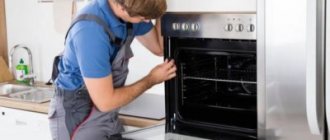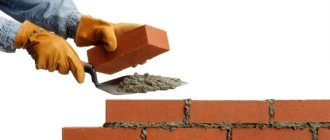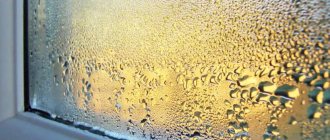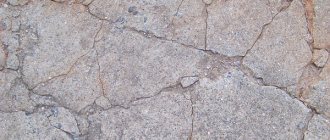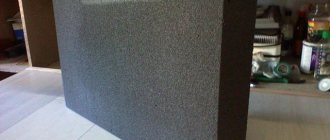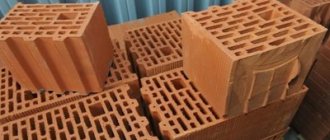Liquid glass is a silicate solution that is used in construction work as a binder. The liquid is thick and grayish-yellow in color. The main advantage of this solution is that it is fire resistant and also has a high level of waterproofing.
Another advantage is that the liquid has adhesive properties. Thanks to liquid glass, concrete becomes acid-resistant. When exposed to liquid glass, concrete hardens faster and acquires heat-resistant properties.
A solution obtained from water mixed with glue and sodium is liquid glass.
There are two types of liquid glass:
- potassium,
- sodium
The sodium type of liquid glass can be combined with other compositions. This type is also used for treating basement walls. This solution is also widely used for forming foundation waterproofing.
The potassium type of liquid glass is good because, due to its high level of crystallization, it is resistant to damage. Since this type of solution is well used for treating floors and walls. Therefore, this type is ideal for use in houses built of wood.
The process of preparing concrete with liquid glass has its own rules. You need to know that preparation is a very serious procedure and if you do not follow the rules, this will entail a decrease in the strength of the building.
It is important to know that in the process of preparing concrete with liquid glass, you need to use a certain dose of ingredients, as well as follow the mixing technology.
There is siliceous concrete, which is produced in finished form, that is, it can be used immediately. It is very difficult to prepare such material at home. Therefore, some builders impregnate concrete with liquid glass at home.
It is possible to prepare such a mixture in high quality, but this requires following certain rules:
- In order to obtain the quality of the manufactured product as in production, it is necessary to correctly distribute the amount of ingredients. In production, 72 liters of glass are used for 1 cubic meter of concrete. And in the process of preparing it yourself, you need to use 1 liter of the mixture for 10 liters of concrete.
- To prepare the solution you will need: liquid glass, water, dry concrete mixture, and glue. The first thing you need to do is mix liquid glass with water, then dilute the glue. After all this has been done, it needs to be mixed with the concrete mixture. The resulting mixture must be applied within 6 minutes and no more. After 6-7 minutes, the solution hardens, and if you did not have time to apply it, then it will no longer be useful.
Liquid glass is widely used for waterproofing. Liquid glass is applied in two layers, due to which a protective film is formed. Applying part of the solution to the surface into the smallest cracks and pores, filling them, creates protection. Due to the fact that the substance grows into cracks, this solution is used as waterproofing.
How to dilute liquid glass with cement - preparation and use of the mixture
The impact of negative external factors on the concrete surface leads to a deterioration in the technical characteristics of the coating. The use of liquid glass in concrete will help increase the resistance of the constructed or finished structure to the negative effects of precipitation, sudden temperature changes and other factors, under the influence of which the properties of concrete surfaces significantly deteriorate. Before you start using such a protective mixture, it is recommended to study its technical characteristics, preparation rules, as well as the pros and cons of use.
What does it represent?
In classic concrete mixtures, the main components are:
- sand;
- cement;
- crushed stone
Adding liquid glass to the mortar will help increase the service life of the structure.
By adding water to the dry composition, it will be possible to obtain a durable building material for pouring a foundation, concrete floor, as well as erecting structures for various purposes. However, sometimes the physical and technical properties of such concrete are not enough for the structure to reliably perform its functions. To improve the technical characteristics of the solution, a special concrete additive based on liquid glass is used. The result is a reliable coating that is resistant to negative external factors, thanks to which the structure will last much longer than the stated period.
Glass-filled concrete with broken glass
An economical option for creating glass concrete. Instead of fiberglass, broken glass and closed glass products are added. Crushed stone can be replaced with broken glass from 20 to 100%. Thanks to this, glass concrete becomes lighter in weight, while its strength remains at a high level. Industrial production of glass-filled concrete with broken glass allows it to be used on site. It is resistant to acids and has low alkali resistance.
Return to contents
Material properties
Using liquid glass in concrete allows you to achieve the following results:
- Increase moisture resistance. Such protection is necessary for structures that are constantly in contact with water. This could be a swimming pool, a damp basement, tanks, well rings, etc.
- Accelerate hardening. If you prepare a classic concrete solution using impregnation, the time for hardening of the finished composition will be much reduced. 24 hours will be enough for the surface to become ready for further construction work, while a regular mortar takes 3-5 days to dry.
- Increase waterproofing properties. Liquid glass for waterproofing concrete is added to prevent the appearance of mold and fungi on the surface. The fact is that the special composition of the product has a bactericidal effect, due to which microorganisms have no chance of developing and multiplying.
- Increase heat resistance. The surface on which ordinary concrete mortar is applied can withstand temperatures up to 200 °C; if it is higher, the plaster layer will collapse. But when you add liquid glass to the solution and treat the structure with it, it will be able to withstand temperatures of 1400 degrees or more. Therefore, when building a fireplace or stove, it is advisable to prepare a cement mortar with liquid glass.
Fiberglass concrete
The composition of glass-optic concrete (Litracon) includes: concrete matrix, long glass fiber, oriented in a special way (including optical fiber). Litracon blocks have glass reinforcement. The material is transparent and has glass reinforcement. At home it is used as a decorative building material. In an industrial building, its thickness can reach 10 m. The cost of glass-optic concrete is high, experts are looking for an opportunity to make the material cheaper.
Return to contents
Application
The scope of application of this high-quality material is extensive. The product is intended for the following purposes:
- Production of concrete with special characteristics, such as frost resistance, fire resistance, acid resistance.
- Waterproofing the foundation, if it is built in a place where groundwater is shallow.
- Waterproofing of walls, basements, floor screeds.
- Arrangement of pool bowls and well walls.
- Production of plaster with water-repellent properties.
- Production of fireproof mortar for plastering and sealing joints when installing fireplaces, stoves, and barbecues.
The feasibility of waterproofing with liquid glass at various sites
It is popular to create waterproofing from this material, and the result is effective. It can also be selected in the following cases:
- Treatment of a concrete product located outdoors helps to obtain moisture protection, after which the item can be used under water;
- Waterproofing pools is easier with this substance;
- Treatment of basement structures helps to obtain antiseptic and moisture protection;
- Treatment of the foundation forms a film-like coating against water to protect the rest of the structure.
Waterproofing pools is easier with this substance.
Advantages and disadvantages
Liquid glass for concrete has a number of advantages, among which the main ones are:
- multifunctionality;
- increased adhesion;
- the formation of a shell on the surface that reliably protects the surface from ground and atmospheric moisture;
- reliable protection and strengthening of the treated structure;
- fast hardening times;
- easy preparation and application;
- affordable price.
The concrete mixture with the additive hardens quickly, so you need to work with it quickly.
However, before fermenting concrete with liquid glass, it is necessary to weigh the pros and cons, because in addition to the advantages, this method of protection also has disadvantages. The main ones are:
- It hardens quickly, which can make the pouring process more difficult because you have to work quickly.
- Narrow focus. It is advisable to apply the material for moisture protection purposes only on concrete and wooden surfaces. It is not suitable for other types of mortars.
- The need for strict adherence to proportions. If the instructions for preparing the mixture are not followed, the finished solution will be ineffective.
Calculations and proportions
In order to correctly calculate the proportions of liquid glass in the total mass of the solution, it is important to determine over what period of time the composition should harden. Based on this criterion, it is recommended to study the table:
| Liquid glass consumption, % | Initial setting, min. | Final hardening, hour. |
| 2 | 40—45 | 20—24 |
| 5 | 25—30 | 14—17 |
| 8 | 10—15 | 6—8 |
| 10 | 5—10 | 2—4 |
The common ratio of cement, sand and liquid glass impregnation is:
A waterproofing coating with a special additive must be prepared by diluting it in one liter of water.
- To make a reliable waterproofing coating, you need to dilute liquid glass in 1 liter of water.
- To obtain a universal-purpose plasticizer, you need to mix cement and sand (proportion 1:3), then add silicate material to them with a volume of 1/5 of the total mass.
- If you need to cover and impregnate a finished plastered surface, water and liquid glass impregnation are mixed in a ratio of 5:1, respectively. Then the prepared solution must be applied to the concrete.
- To prepare a fire-resistant mortar, up to 5% silicate impregnation is added to the standard cement-concrete mixture.
Cooking: basic rules
Processing concrete with liquid glass will proceed quickly and efficiently if the mass is prepared correctly. The procedure is as follows:
- Prepare 10 liters of clean, filtered water. Process water is not suitable because the salts and other impurities contained in it negatively affect the reaction.
- Take liquid glass into a glass and carefully pour it into the water, carefully stirring the composition until a homogeneous consistency is obtained.
- Pour the prepared solution into a basin, and then, carefully mixing everything, add the cement-sand mixture in the calculated proportions. Adding liquid glass to concrete without first diluting it in water is prohibited, because the finished product will not meet the declared characteristics.
- Beat the mixture with a construction mixer or a drill with a special attachment.
- The finished product is poured onto a horizontal surface, for example, formwork, or it can be used to cover walls.
After treatment with liquid glass, the vertical surface will become absolutely smooth. If additional decorative finishing is planned, then in order to create roughness and reliable adhesion to the material used, it is recommended to additionally coat the wall with the construction product “Betonokontakt”.
How to glue
It turns out that this is only at first glance gluing - a process without much intricacy. In fact, it is important to know exactly what to do and how to do it, otherwise the result will disappoint you.
The subtleties of the glass gluing process depend on what material the parts are made of.
First of all, before starting work, prepare the parts that you will glue, latex gloves and adhesive. Cover the table (floor or cabinet) on which the work will be done with film, then it will be easier to remove drops of glue. Wash the surface of the parts to be glued with soapy water or degrease with alcohol. If you are gluing broken pieces together, be careful not to cut yourself on the sharp edges.
The surfaces of the parts must be washed in water and soapy water or degreased with alcohol.
After drying, apply glue to one of the parts and press the second one tightly to it. If you use a cyanoacrylate compound, the pressing time is a few seconds. If the glue is silicone, it will take a few minutes.
If you use UV glue, then after the above steps you will need to heat the parts to 40 degrees. You can use a hairdryer for this. It is important to position the part in such a way that the glue does not drain from it, firmly fix the surfaces to be glued, and then place it under a UV lamp for 30 seconds. If you don't have a special lamp, leave the combined parts in sunlight. Of course, in this case it will take more time, but the quality of gluing will be decent. If excess glue appears at the edges, they are cut off with a knife or removed with a special scraper, but only after it has hardened.
The exposed glue is removed with a scraper or cut off with a knife after hardening.
When gluing glass and metal, the main thing is to choose the right composition. Either UV glue or another adhesive composition will do, but always with a gel-like consistency. Then the glue will not spread around the edges. Surfaces are degreased and heated to +40 degrees. The seam is positioned horizontally and glue is applied to it. After this, the parts are pressed tightly and fixed using special clamps.
If there is no lamp, the parts can be placed on a window under the sun's rays; it will take more time to polymerize, but the result will be the same.
Safety precautions
Liquid glass is not a substance with a high level of toxicity. But if the material gets on the skin or mucous membranes, it causes irritation. To avoid injury, special equipment should be used during work. clothes, wear special gloves on your hands, and protect your eyes with safety glasses. Premises where construction work is carried out using liquid glass must be constantly ventilated. If it happens that the prepared solution gets on the skin, it is necessary to treat the damaged area with a weak solution of vinegar diluted in clean water.
Source
Composite concrete
Glass-reinforced concrete is similar in its characteristics to reinforced concrete. Instead of metal rods, composite concrete is reinforced with fiberglass. The main advantageous qualities of composite reinforcement:
- resistance to moisture for a long time;
- low weight of fiberglass rods;
- affordable price;
- fiberglass material can be rolled into coils 300 m long, this ensures easy transportation;
- provides high thermal insulation.
The tensile strength of a composite rod is 2.5 times greater than that of a steel rod. Due to this feature, the fiberglass rod is needed thinner. Reinforcing concrete and creating a reinforcing belt made of glass fiber is easier and faster due to its following features:
- a light weight;
- reliable fixation using plastic clamps;
- does not freeze in winter, facilitating construction work at low temperatures.
Composite concrete is less susceptible to aggressive environments. Unlike glass-composite reinforcement, reinforced concrete reinforcement, which is susceptible to corrosion, can cause the structure to rupture from the inside and completely collapse.
The thickness of composite concrete can be smaller without affecting the quality of the structure. The weight of the structure becomes less, the strength remains at a high level. Glass concrete reinforcement does not require additional protection, like conventional metal reinforcement. The foundation can also be made unstrengthened, thanks to light reinforcement.
Return to contents
Features of liquid glass
The use of liquid glass solution is determined by the composition of the material; it is based on sodium silicate - a colorless substance that is resistant to moisture penetration. In expensive formulations, potassium silicate is used; it has improved technical characteristics and is prone to the formation of a surface film. To obtain the main components, enterprises fuse soda, or potash, with silicon dioxide. Without impurities, the material is absolutely colorless, or has the appearance of white crystals.
DIY production
Glass waste is difficult to dispose of and is poorly affected by the environment and microorganisms. Therefore, it is important to use waste material as recyclable materials for the manufacture of construction products. The technology for producing glass concrete from such waste is simple. First, start cleaning and sizing the filler and binder material. Using a high-strength grade of cement, they proceed to mixing the components. Silicates can be used as a binder.
Pros and cons of using liquid glass
Adding silicate glass to the solution increases its technical and operational characteristics.
Among the main advantages:
- increased fluidity of the composition. Due to the fluidity of the product, it is able to penetrate into the smallest cracks to create reliable surface protection. Uniform distribution of the composition occurs when applied to both concrete and wood;
- forms a high-quality, waterproof film. A mixture of liquid glass and cement can be applied in any convenient way, regardless of the method of use, the film will be intact and continuous. The manufacturer allows the application of glass and cement with a long break;
- low consumption. This solution is used to close cracks of any size, regardless of the method of application. Silicate and cement can be mixed either at the stage of concrete preparation or for surface coating as part of an insulating material;
- low cost. Cement is a relatively cheap material due to the availability of ingredients; we have already looked at what cement is made from. Due to the large amount of natural material, the production of silicate material is an inexpensive procedure. At a low cost, glass is distinguished by high-quality waterproofing; in terms of water resistance it is not inferior to other insulating coatings.
The product is a leader in quality and price in its field. Compared to other materials, this one is used more often due to its availability and ease of application, but it has disadvantages.
The negative aspects include:
- limited use in mortars. Apart from processing concrete and wood, there is no place for it to be used in construction;
- not used as an independent substance. It is used exclusively in conjunction with additional substances. The problem lies in the fragility of the coating after hardening;
- the complexity of application is relatively high, since the solution must be made suitable quickly enough. It is important to have in-depth knowledge of the intricacies of the material. The main feature is rapid drying, the composition is prepared in small portions, the set material becomes unusable. It is important to understand how much liquid glass to add to the solution; if the concentration is exceeded, the quality of the concrete deteriorates. The composition is recommended for use within 6 minutes.
You can use the material yourself, and to improve the result you can add a plasticizer. To avoid wasting material, it is better to prepare it in small quantities.
In practice, it is not recommended to introduce more than 5% liquid silicate glass
Lifehack for gluing glass
Before we talk about how to glue glass to glass, we need to mention the importance of surface preparation. It is cleaned of grease and dirt using a solvent or a special cleaner.
Before starting the procedure, the exact fit of the parts is checked.
After this, before applying the composition, the surface must be heated to a temperature that will be approximately 30 degrees above room temperature.
Regardless of whether you use optical glue or any other, you need to apply it in a minimal amount. Afterwards, the parts are glued together for the time specified in the instructions, usually 60-120 seconds. If UV glue was used, the connection is additionally trained.
Restoring your favorite glass item is not difficult if you approach the repair correctly. But which glue for glass is better, everyone decides for himself. Among the many different compositions and brands, experts prefer UV, and ordinary people prefer the usual Moment. It will be doubly pleasant if you share your experience in the comment below.
–Tags
– Quote book
Flower buns with cottage cheese and confiture I offer another recipe for buns with cottage cheese, k.
Orange socks with elastic band 2x1 1. Women's woolen socks, size 38-39, good quality.
Beret (machine knitting) from IRINKA on LD is knitted with regular cross knitting, by the way, I think I eg.
BREAKING PANTS FOR 4-5 years old. The pattern looks something like this. I measured the OB and it turned out to be the widest.
Chicken breast “Japanese style”.
–Categories
- knitting (490)
- children (256)
- machine knitting (251)
- recipes (227)
- sewing (142)
- tips (126)
- interesting (24)
- flowers (13)
- my works (6)
- internet (5)
- felting (4)
- photo (3)
- pictures (3)
- weaving (2)
- for blog (1)
- bags (0)
- toys (0)
- (0)
-News
–Links
-Video
-Music
-I'm a photographer
Increased waterproof and heat resistance
A solution with liquid glass reduces the porosity of the composition and increases water resistance. Concrete structures and reinforced concrete products when exposed to high humidity become vulnerable to mold and mildew. Due to the antiseptic effect of glass, it should be used in places in contact with water, this will protect against the formation of mold.
Such a composition can be prepared only by adding a small concentration of the solution - 3% of the total volume. It is preferable to combine with coarse cements. Mix cement in the specified proportion, otherwise, when the silicate composition is washed out of the concrete, it will lose some of its strength characteristics and become vulnerable to moisture.
A tangible positive effect when combining liquid glass and cement is manifested in increased waterproofing properties
The additive is used to produce heat-resistant artificial stone. If you expose standard concrete to heat, around 200°C, the material will begin to deteriorate. If you add 1 liter of quartz solution to 3-3.5 liters of cement, the heat resistance increases to 1000-1400°C, which is used for hardening decorative stone. In the process of calculating the production of facing stone, 29-34% is allocated to liquid glass.
The composition must be added when laying blocks in industrial facilities, private construction: construction of fireplaces, chimneys, stoves.
Glass fiber reinforced concrete
The composition of glass fiber reinforced concrete includes alkali-resistant glass fiber. This is a universal building material. The production of monolithic blocks and sheet materials cannot be done without it. The composition may include additives: acrylic polymers, quick-hardening cement, dyes. Advantages of glass fiber reinforced concrete:
- resistance to water influence;
- strength;
- ease;
- high decorative qualities.
The composition of the material includes: fine-grained initial concrete mortar (sand filler - no more than 50%), fiberglass. It has high strength characteristics in bending, tension, compression, and impact.
Chemical resistance and frost resistance are also at a high level. Filling the solution with glass fiber is a labor-intensive process that requires uniform distribution of the fiber in the solution. Add it to the dry batch. The mixture becomes rigid and less flexible. In large layers, vibration compaction is required. The sheet material is produced by spraying.
Return to contents
Hardening
The use of cement with the addition of silicates is allowed in any area, but it is especially recommended in places where the composition needs to harden quickly. There is a regularity: the more liquid is used, the faster the concrete sets.
Specific examples:
- A solution with 10% silicate will harden quickly. Drying at a temperature of 20°C will take about 4 hours, and the setting time will occur in 5 minutes;
- if you mix 2% silicate glass with water, the hardening time will increase to a day, and the setting time will increase to 40 minutes.
The example is based on cement grade M400. Some sources recommend adding 25% silicate to increase the strength of concrete and high quality of the composition, but the chemical and technical characteristics of such a solution will be reduced. In just a day, the finished solution will begin to crumble, and the addition of liquid glass in a concentration above 25% will not allow the composition to harden at all. Based on this, we understand that it is not recommended to exceed a concentration of 10% silicate adhesive for moisture protection.
Definition
Glass concrete differs from conventional concrete in its high performance properties and advantages. Advantages of glass concrete:
- versatility of use - blocks, panels, sheets for cladding are made from glass concrete;
- lighter, main components: fine-grained cement, sand - equal proportions, fiberglass;
- high-strength - the material is resistant to stretching, compression, bending, impact resistance is fifteen times higher than that of a standard solution;
- a variety of additives has a positive effect on the properties of the material.
Factory-produced glass concrete is of higher quality than home-made glass.
Return to contents

